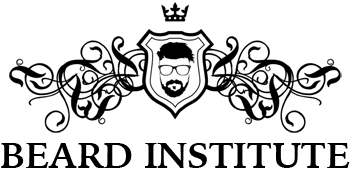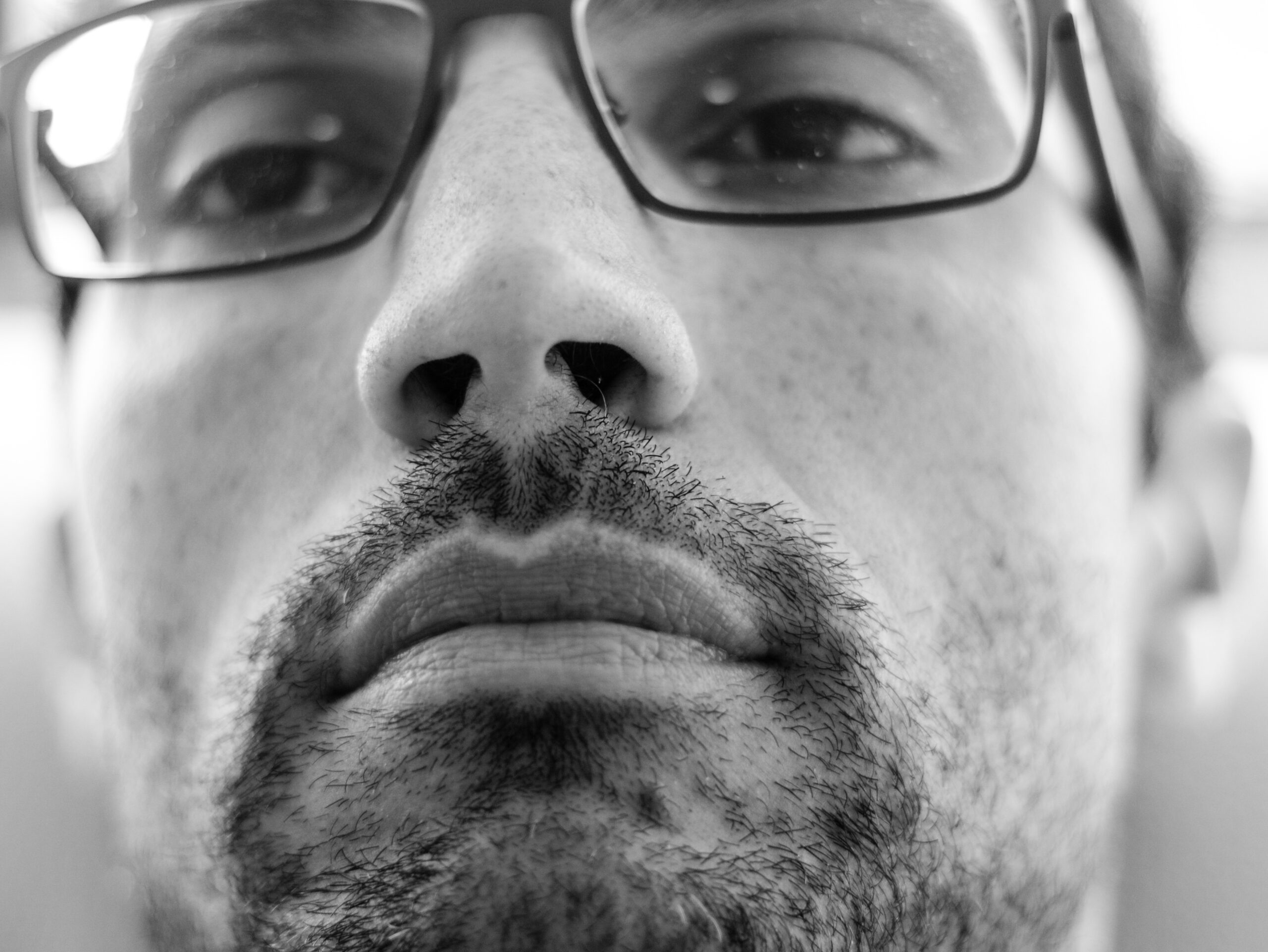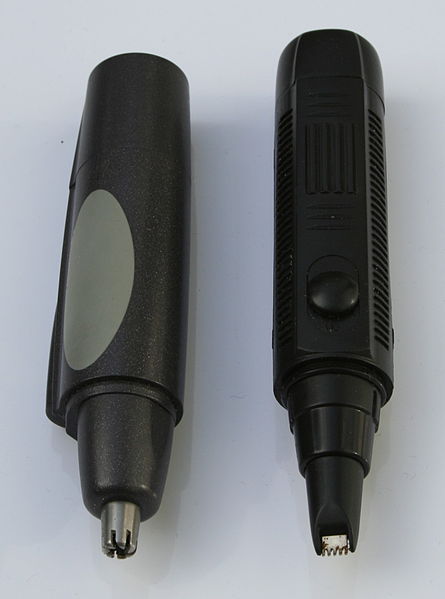Using an electric nose trimmer is a quick and painless way to eliminate nose hair. Trimming your nose hair this way is faster and safer than using scissors or other tools. Never over-trim your nose hair since it is an essential element of your immune system that filters out dust and pathogens. Even though using an electric trimmer is far safer than other techniques, you might still get ingrown hairs or inflamed skin inside your nostrils. After trimming your nose, take care of any irritating hairs you find there to stop the discomfort and avoid infection.
All about Nose Hair Trimmers
The nose hair trimmers are a painless, inexpensive solution to remove the little hairs from your nostrils. They fall within the manual and electric categories for removing nose hair. In order to avoid pricking your skin, tiny scissors with rounded edges are a good visual depiction of manual hair removal.
On the other hand, electric trimmers are compact, portable rotating devices with a tiny cutting blade on one end. A metal or plastic guard protects the blades from skin contact. Small openings in the guard allow longer hairs to pass through to the cutting mechanism underneath.
It is wise to understand how to slowly insert the trimmer vertically while trimming in the same direction. To prevent hair pull, move the trimmer from left to right without exerting too much pressure and without spinning or twisting it.
One advantage of utilizing hair trimmers is that you may remove the hairs that protrude from your nose while keeping the rest in place to continue shielding it from foreign objects. The nose trimmer performs as its name implies, it trims, so your hair quickly grows back, necessitating repeated use of the process, which you can probably imagine are the drawbacks. Additionally, you probably would not be able to stop the itching that occurs from clipped hair clinging to the inside of your nose.
The drugstore has both manual and electric nose hair trimmers on the shelves. Furthermore, you need not worry about unintentional wounds because both have been designed to fit securely within the nose without damaging the soft tissues inside.
Depending on whether the personal grooming package feels more reasonable, you may purchase this trimmer separately or in conjunction with other kits. Although using this instrument is rather simple, here are some ideas to assist you if you still need assistance.
Steps on how to use nose hair trimmer
1. Stand in front of a well-lit mirror
To look clearly inside your nostrils, make sure the lights are bright enough. Good illumination makes it easier to detect any lighter hairs that may be poking out of your nose. To see proper detail, you might have to approach close to the mirror. To attain the proper angle, try utilizing a hand-held mirror or a magnifying mirror. Keep tissues on hand to get the trimmings out of your nose and a towel handy to wipe your face after you are done.
2. Buzz the hair that peeks out from your nostril
Lean back and carefully insert the nose trimmer while checking your placement in the mirror. To widen the nasal channel, try softly pushing down your top lip. Ensure that the trimmer is snugly in place; do not force it in all the way. Move the trimmer up and down the nostril in a steady circular motion.
You should not be wounded or have your skin sliced by your trimmer, especially not an electric one. Despite never really touching the skin, the blades are coated such that they buzz nose hair near to it. However, some trimmers, particularly those that are manual, may sometimes (and painfully) rip a hair out from the root.
Avoid pressing the trimmer too far into your nose. Only the hairs that others will see poking out below your nose should be trimmed. To aid in preventing germs, do not touch the rest of your hair.
Buzz till you are happy with how you look. You should not need much time to trim—possibly just a few seconds. If you are unsure, remove the trimmer from your nostril and look in the mirror to assess the issue.
3. Trim the hairs that drive you crazy, but do not remove everything
Only clip the hairs that are most noticeable, such as those that are at the rim of your nostrils, and any noticeable, big hairs that protrude from your nose. If you put your finger straight up on your nose or smile at yourself in the mirror, you may see nose hairs that would otherwise be hidden. Only cut what is absolutely necessary. Your nasal hairs defend your body from infection, which is why it’s crucial to have them; totally getting rid of them might have unfavorable results.
4. Clean up when you are finished
Clean your face, wipe away any stray nose hair trims that have fallen into the sink, counter, or floor, and clean the nose hair trimmer. Most manual nose hair trimmers can be cleaned by running water over the blades, however many electric trimmers are not wet/dry capable. Avoid immersing an electric trimmer in the water while cleaning it; instead, use a damp or dry cloth. Before cleaning electric trimmers, unplug or turn them off. Any hair that has landed on your face should be removed with a towel. Blow your nose gently into a tissue to collect any leftover trimmings, and think about using a tissue, sanitary wipe, or nasal spray to clear out your nostril. Any surface that has stray hairs should be cleaned with a cloth, tissue, or sponge. Get rid of or wash your cleaning tool.
Comparing popular grooming options
Trimming vs. waxing
Waxing may be beneficial for other parts of your body, but it should never be done on your nostrils. The sensitive skin inside of your nose may be damaged by waxing, which may be very painful. Additionally, it may remove too much hair, leaving your nose vulnerable to dirt and germs. On the other hand, trimming enables you to manage the length and preserve a good balance of nose hair. Therefore, reserve the wax for your back and stick to trimming your snout.
Trimming vs. plucking
Trimming is superior to plucking when it comes to maintaining nose hair for a number of reasons. As was previously said, plucking can result in discomfort, irritability, and even infection. However, using a nose hair trimmer to maintain your nostrils neat and orderly is a quick, painless, and effective method. You will not regret it, so save the tweezers for your brows and get a good nose trimmer instead.
Trimming vs. laser hair removal
On other parts of the body, laser hair removal may be a popular option for long-lasting hair reduction, but it is ineffective for removing hair from the nose. The operation has the potential to harm mucosal membranes and result in long-term problems. The safest, most efficient, and least expensive approach to keeping the hair on your nose under control is trimming. You may quickly achieve a well-groomed schnoz with the correct nose hair trimmer without putting your health in danger or breaking the bank.
Conclusion
That’s all, then! Now that you are aware of the proper technique, you can trim your own nose hair. If you use our recommendations, getting rid of nose hair does not have to be expensive or difficult. You may accomplish it fast and painlessly.


